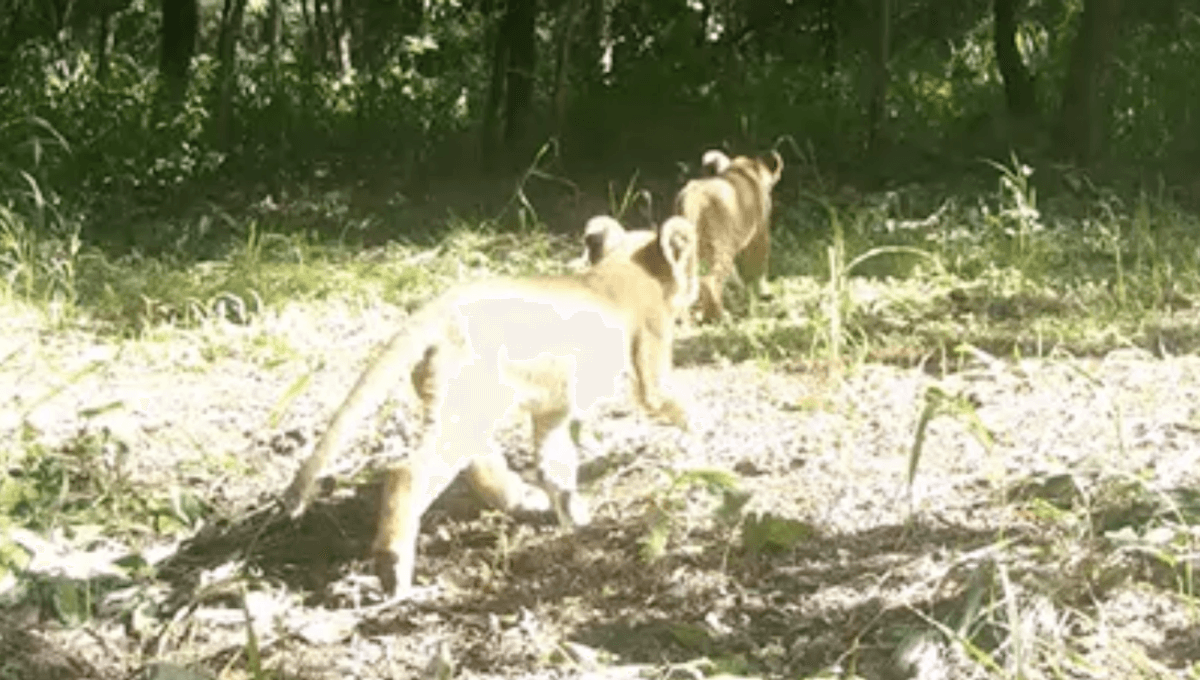-
Nieuws Feed
- EXPLORE
-
Pagina
-
Blogs
-
Forums
Lion Cubs Seen In Africa’s Bamingui-Bangoran National Park For The First Time In Decades

Lion Cubs Seen In Africa’s Bamingui-Bangoran National Park For The First Time In Decades
The North-Eastern Central African Republic (CAR) is celebrating the first video and photographic evidence of lion cubs in the region in decades. Following the dedicated efforts of conservation teams, new footage has revealed a female with three cubs in tow in Bamingui-Bangoran National Park.
The rest of this article is behind a paywall. Please sign in or subscribe to access the full content. “This is the payoff of years of relentless protection and patience,” said Armand Luh Mfone, the Wildlife Conservation Society’s (WCS) Director of Programs for CAR, in a release emailed to IFLScience. “The CAR government, WCS and partners have worked hard to secure this landscape against poaching and conflict. To see not just a lioness, but a mother raising cubs, gives hope that the ecosystem is healing.” Poaching, habitat loss, and human-wildlife conflict have pushed lions in CAR to the brink, and for a long time, only males were seen in the region. This raised concerns as to how the population could survive, but then a female was spotted in 2019. Six years went by without another sighting, until earlier this year, in August, a female was sighted who was thought to be lactating. This was a very promising sign, but it wasn’t hard evidence of surviving cubs (BTW, ever wondered why lion cubs have spots?), and so the team set about trying to find a non-invasive way to see if she was alone. “We combined satellite imagery with on-the-ground field knowledge and an understanding of lion behavior to target high value real estate for a mother lion – rocky outcrops, forest corridors near savanna patches and water sources,” said John Guernier, WCS’s Director of Bamingui-Bangoran National Park. “We set cameras on roads and trails leading to these spots; we avoided the possible den-sites themselves so we didn’t disturb the cubs, and we just had to hope that she would lead cubs past our cameras. After weeks of waiting, our plan finally paid off.” Now, we have video evidence of three cubs that are estimated to be about 4 months old. The discovery marks a milestone for the conservation of a population that was thought to be on the brink, demonstrating that, against the odds, there is still hope. “The three cubs show what’s possible when habitats remain intact and conservation is persistent,” said Luke Hunter, Executive Director of WCS’s Big Cats Program, in a release emailed to IFLScience. “Where there is one lioness, there are almost certain to be more; and now that we know there is at least one litter, I’m sure that others will follow.” “With our partners and the CAR government, we are determined to give these cubs as great a chance as possible to live as wild lions, free of persecution. If we succeed, many years from now the descendants of these cubs will be part of a thriving, protected population many hundreds strong.”


